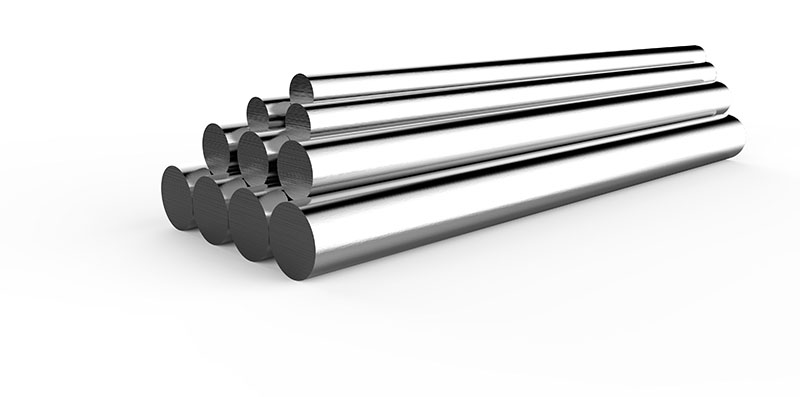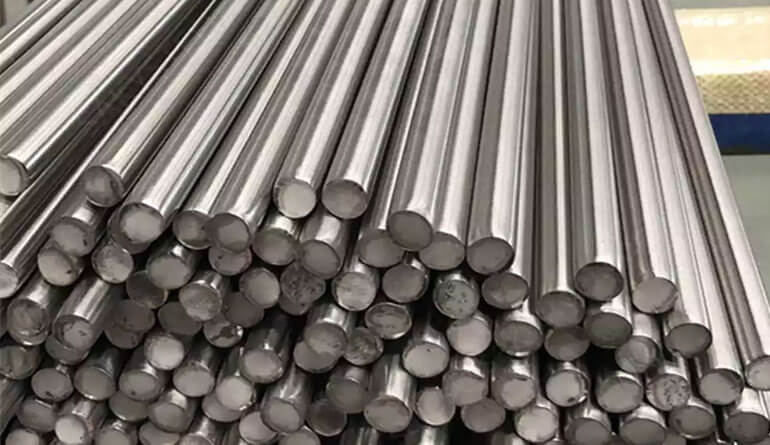Stainless steel is a material that has become synonymous with durability, versatility, and style. From kitchen appliances to architectural structures, this alloy has found its way into countless applications across various industries. But when it comes to choosing the right type of stainless steel for your specific needs, things can get a bit confusing. In particular, the comparison between 430 and 304 stainless steel often leaves people scratching their heads. Which one is better? What are the differences? Fear not! In this blog post, we will dive deep into the world of stainless steel and explore the distinctions between these two popular grades – 430 vs 304 stainless steel. So buckle up and let’s embark on an enlightening journey through metallurgy!
What is Stainless Steel?

Stainless steel is a remarkable alloy that has revolutionized the way we design and construct various products. It is composed of a combination of iron, chromium, and other elements such as nickel or molybdenum. The addition of these alloying elements gives stainless steel its unique properties.
One key characteristic of stainless steel is its resistance to corrosion. Unlike regular steel, which can rust when exposed to moisture or oxygen, stainless steel forms a protective layer on its surface that prevents oxidation. This makes it an ideal choice for applications where durability and longevity are crucial.
Another notable feature of stainless steel is its aesthetic appeal. With its sleek and polished finish, stainless steel adds a touch of sophistication to any space or product it adorns. Whether it’s kitchen appliances, jewelry, or architectural structures, stainless steel effortlessly combines functionality with style.
Furthermore, this versatile material offers excellent strength-to-weight ratio compared to other metals like aluminum or copper. This means that despite being lightweight, stainless steel exhibits impressive structural integrity – making it suitable for demanding environments where tensile strength is essential.
In addition to its physical attributes, stainless steel also boasts high heat resistance capabilities – making it perfect for applications involving extreme temperatures like automotive components or industrial furnaces.
The composition and properties of stainless steels make them incredibly valuable in numerous industries ranging from construction to healthcare. Its exceptional durability combined with aesthetic appeal ensures that products made from this alloy will stand the test of time while maintaining their visual allure!
430 vs 304 stainless steel:Differences Between 430 and 304 Stainless Steel
When it comes to stainless steel, there are many different types available, each with its own unique properties and characteristics. Two of the most commonly used types are 430 and 304 stainless steel. While they may look similar at first glance, there are some key differences between them.
One major difference between 430 and 304 stainless steel is their composition. Grade 430 stainless steel contains a higher percentage of chromium compared to grade 304, which gives it slightly better corrosion resistance. However, grade 304 stainless steel contains more nickel than grade 430, making it more resistant to oxidation.
Another difference lies in their magnetic properties. Grade 430 stainless steel is magnetic due to its high iron content, while grade 304 is non-magnetic.
In terms of appearance, both grades have a smooth and shiny finish that can be easily cleaned. However, grade 304 has a slightly brighter finish compared to grade 430.
Physical Properties of 430 and 304 Stainless Steel
When comparing the physical properties of 430 and 304 stainless steel, it’s important to consider a few key factors. First, let’s talk about their composition.
Both types of stainless steel are alloys that contain iron, carbon, and varying amounts of chromium. However, there is a significant difference in their chromium content. For instance, 430 stainless steel contains around 17% chromium while 304 stainless steel has approximately 18-20% chromium.
The presence of chromium is what gives stainless steel its corrosion-resistant properties. It forms a thin layer on the surface that prevents oxidation and rusting. Due to its higher chromium content, you’ll find that 304 stainless steel offers better resistance against corrosion compared to the lower-grade 430 variant.
Another aspect worth considering is their magnetic properties. While both types can be magnetized to some extent due to their iron content, grade 430 is generally more ferromagnetic than grade 304.
Additionally, when it comes to heat resistance and strength at high temperatures, grade 304 outperforms grade 430. This makes it suitable for applications where extreme heat or thermal cycling may occur.
In terms of appearance, both grades have a lustrous finish but differ slightly in color tone – with grade
430 having a warmer gray hue compared to the cooler silver shade seen in grade 304.
Corrosion Resistance Comparison

Corrosion resistance is a critical factor to consider when choosing stainless steel for various applications. In the battle of 430 vs 304 stainless steel, it’s crucial to understand how each performs in terms of corrosion resistance.
When it comes to corrosion resistance, 304 stainless steel takes the lead. This type of stainless steel contains a higher percentage of chromium and nickel compared to 430 stainless steel, which enhances its ability to withstand corrosion from acids, moisture, and other corrosive elements.
While both types are resistant to atmospheric oxidation, 304 stainless steel offers superior protection against pitting and crevice corrosion. Its excellent resistance makes it ideal for applications where exposure to harsh environments or corrosive substances is expected.
On the other hand, although less resistant than 304 stainless steel, 430 stainless still possesses decent corrosion resistance properties. It can handle mild chemicals and fresh water well but may not be as suitable for highly acidic or chloride-rich environments.
If you require optimal corrosion resistance for your application, particularly in aggressive or corrosive environments such as chemical processing plants or marine settings, opting for 304 stainless steel would be the wiser choice.
Applications for Each Type of Stainless Steel
When it comes to stainless steel, both 430 and 304 have their own unique applications. Let’s take a closer look at where each type shines.
The magnetic properties of 430 make it a popular choice for applications such as automotive trim, kitchen appliances, and industrial equipment. Its resistance to corrosion makes it suitable for outdoor use as well. However, due to its lower nickel content compared to 304, 430 may not be the best option for environments with high temperatures or exposure to acids.
On the other hand, 304 stainless steel is widely used in various industries thanks to its excellent corrosion resistance and versatility. It is commonly found in food processing equipment, chemical containers, architectural structures, and even medical devices. The high temperature resistance of grade 304 also makes it suitable for exhaust systems and furnace parts.
Consider your specific needs when choosing between these two types of stainless steel. Whether you require magnetic properties or superior corrosion resistance will ultimately dictate which one is right for your application.
Remember that this brief overview only scratches the surface of the numerous applications each type can serve!
Cost Comparison
When it comes to considering the cost of stainless steel, both 430 and 304 grades have their own advantages. The price of stainless steel can vary depending on several factors such as market demand, availability, and quantity required.
In general, 430 stainless steel is more affordable than 304 stainless steel. This is primarily because 430 contains less nickel than 304. Nickel is an expensive alloying element that contributes to the strength and corrosion resistance of stainless steel.
On the other hand, while 304 may be pricier upfront due to its higher nickel content, it offers a better long-term investment. Its superior corrosion resistance properties make it ideal for applications in industries such as food processing and medical equipment where maintaining hygiene and preventing contamination are crucial.
When determining which type of stainless steel to choose based on cost considerations alone, it’s important to weigh the specific requirements of your project against your budget constraints.
Remember that choosing a lower-cost option like 430 may save you money initially but could result in higher maintenance or replacement costs down the line if used in environments where corrosion resistance is critical. Conversely, investing in higher-quality materials like 304 might entail a larger upfront expense but can offer greater durability and longevity over time.
At the end of the day, finding a balance between cost-effectiveness and performance is key when making decisions about which grade of stainless steel best suits your needs.
Making the Right Choice: Factors to Consider
When it comes to choosing between 430 and 304 stainless steel, there are several factors that you need to consider. Each type has its own strengths and weaknesses, so understanding these differences will help you make an informed decision.
One important factor is the intended application of the stainless steel. Are you using it for a kitchen appliance or for outdoor furniture? The environment in which the steel will be used plays a significant role in determining which grade is best suited for your needs.
Another consideration is corrosion resistance. While both 430 and 304 stainless steel offer good resistance to corrosion, there are some variations between the two. If your project involves exposure to harsh chemicals or high levels of humidity, then you may want to opt for the higher corrosion resistance offered by grade 304.
Cost is another factor that cannot be overlooked. Generally, grade 430 stainless steel is more affordable compared to grade 304. However, if longevity and durability are essential, investing in grade 304 may prove cost-effective in the long run.
Other factors such as appearance, strength, and heat resistance should also be taken into account when making your decision.
Conclusion
When it comes to choosing between 430 and 304 stainless steel, it’s important to consider the specific needs of your application. Both types offer their own unique benefits and drawbacks.
If you’re looking for a stainless steel that offers good corrosion resistance in mildly corrosive environments, as well as affordability, then 430 stainless steel may be the right choice for you. It is commonly used in automotive trim, kitchen appliances, and indoor decorative applications.
On the other hand, if you require superior corrosion resistance and excellent performance in demanding environments such as food processing or medical equipment, then 304 stainless steel should be your go-to option. Its high nickel content ensures exceptional durability and makes it suitable for outdoor applications too.
Cost-wise, while both types of stainless steel have their price differences due to variations in composition and availability, overall 430 stainless steel tends to be more affordable than its counterpart.
Making the right choice between 430 and 304 stainless steel depends on factors like environment conditions, budget constraints,and desired performance characteristics. Consulting with a trusted supplier or expert can help guide you towards the most suitable option for your specific requirements.
Whichever type of stainless steel you choose – whether it’s resilient yet economical 430 or highly versatile and resistant 304 – remember that proper care and maintenance are essential to ensure longevity.
Now armed with knowledge about these two popular grades of stainless steel along with their key differences regarding physical properties,corrosion resistance,applications,cost considerations,you can confidently make an informed decision that best meets your needs!
